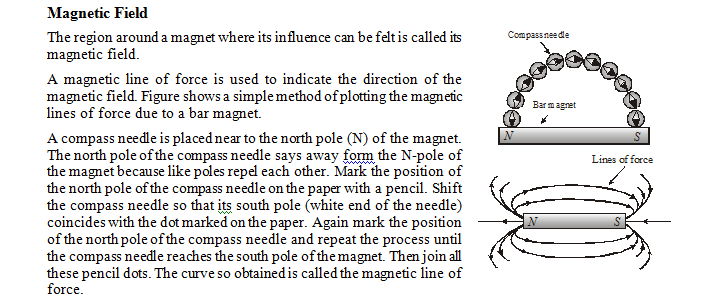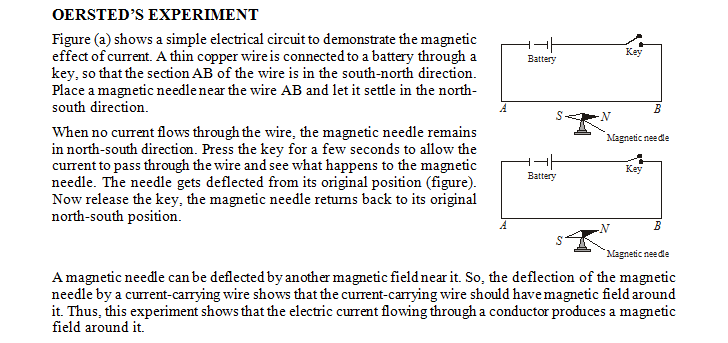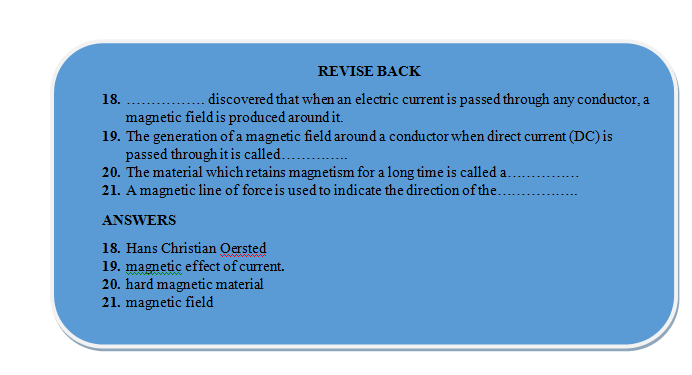
Magnetic Effect Of Electric Current
Electric Currents and Circuits of Class 7
Electricity and magnetism were discovered separately, and for a long time they were thought to be two widely different things. For example, magnetism was through to be a special property of certain substances like lodestone (a magnetic ore of iron). Then, in the early part of the ninteenth century, the works of scientists like Hans Christian Oersted, Michael Faraday and Andre Ampere showed that there was a definite relationship between electricity and magnetism.
A Danish scientist Hans Christian Oersted for the first time in 1819 discovered that when an electric current is passed through any conductor, a magnetic field is produced around it.
The generation of a magnetic field around a conductor when direct current (DC) is passed through it is called magnetic effect of current.
Magnetism
Magnets made of certain alloys of iron, nickel and cobalt retain their magnetism for a long time and are, therefore, called permanent magnets. And the material which retains magnetism for a long time is called a hard magnetic material.
Magnetism has been a source of curiosity and entertainment for the people of all ages for long. Magnets are commonly found in magnetic stickers that stick to refrigerations, steel almirahs, and so on, it toys, and of course, in science laboratories. The earth itself acts as a huge magnet Actually, magnets all around us, since each electron, and neutron behaves as a tiny magnet












